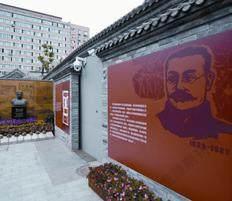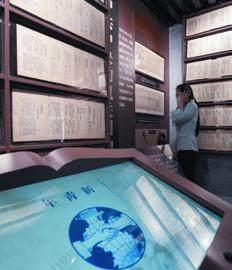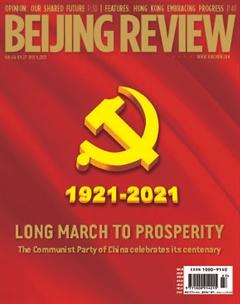The Early Sparkles
By Yuan Yuan

The brick building is only a few hundred meters from the Forbidden City. Although its name, the Red Building, is familiar to many, the building itself has remained inconspicuous for decades, hidden among a cluster of nearby tourist sites.
The word “red” in the name comes from the color of the bricks and tiled roofs of the building. The four-story structure was built in 1918 and served as the main campus of the prestigious Peking University from that year until 1952.
The Red Building is the place where the theories of Marxism first enlightened many Chinese people. Leading academics and the young pioneers on campus initiated a series of pivotal social and political movements around 1920, making the Red Building the hub of Chinas New Culture Movement. The May Fourth Movement, a patriotic mass movement of students, also originated here in 1919.
Li Dazhao and Chen Duxiu, both professors at the university and leaders of the early communist movement, made the university Chinas first to introduce Marxism to its students. Mao Zedong, the late Chinese Chairman, worked here as a librarian in his 20s and disseminated Marxist ideas on campus.
Among the 13 representatives attending the first National Congress of the Communist Party of China (CPC), six had either studied or worked in the Red Building.
At a press conference held in Beijing on June 27, Zhang Aijun, deputy head of the Publicity Department of the CPC Beijing Municipal Committee described the building as “recording the glorious history of how Marxist ideas were spread and the Party was incubated.”
Due to the part it played in the history of modern China, in 1961 the Red Building was listed as one of Chinas national-level key cultural heritage sites.
After renovations that took over a year, the Red Building reopened to the public on June 29 with a debut exhibition on Beijings revolutionary history in the early 20th century, to mark the centenary of the CPC.
Covering an area of 8,000 square meters, the exhibition displays 958 photographs and 1,357 cultural artifacts, as well as many other artworks and films. Various journals and newspapers published during that period are also on display at the exhibition.
According to Zhang, the local government has renovated another 30 historic venues of its early revolutionary activities in Beijing between 1915 and June 1921. As part of the celebration of the centenary, some of these sites across five of Beijings districts have reopened their doors to the public since June.
The buildings include the sites of major historical events, the former residences of key Party members, and other memorial sites.
“A leading principle in the renovation work was to preserve the original appearance of the buildings,” said Peng Yuehui, a deputy director of the department in charge of revolutionarythemed artifacts under the National Cultural Heritage Administration.“Protection is the priority, and realtime monitoring of the artifacts is in place for better protection.” BR
(Photos by Xinhua News Agency)


